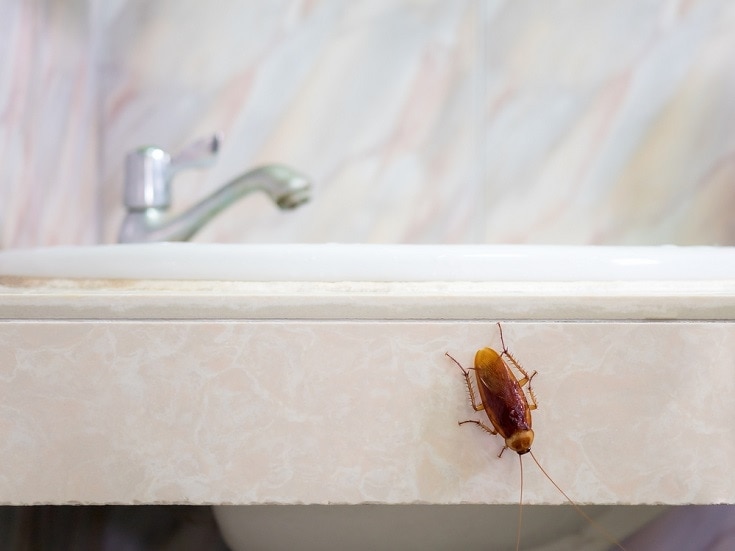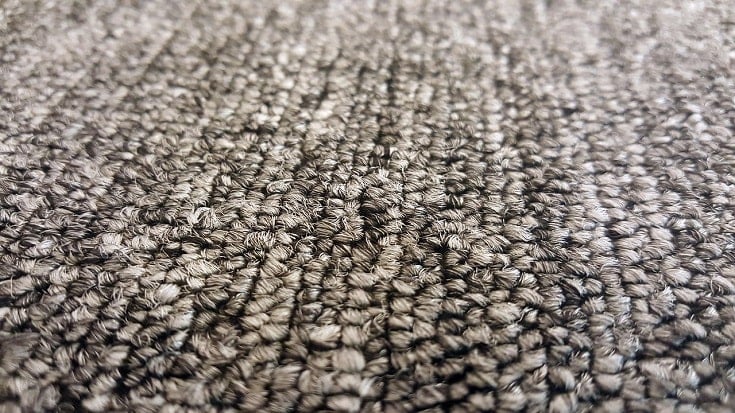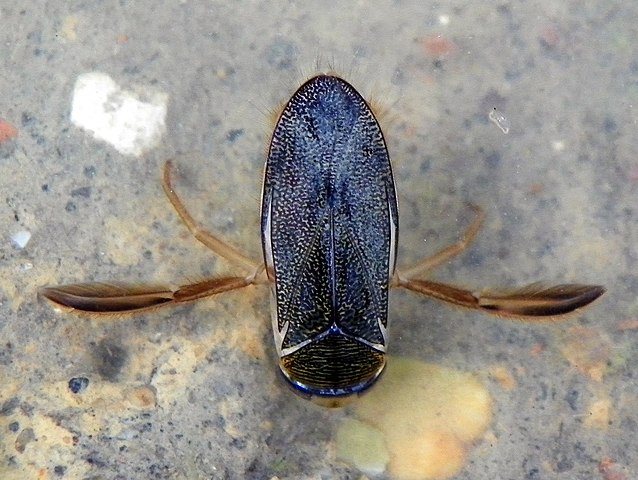10 Bugs That Are Living in Your House and How to Get Them Out
-
- Last updated:


The truth is, we need bugs. They’re an essential part of the environment and food chain. But that doesn’t mean that we want them in our houses! Spotting a few bugs in your home can make you instantly feel uncomfortable. Finding an infestation is even worse! If you do happen to find bugs in your home, you’re going to want to get rid of them as quickly as possible.
The following 10 bugs are some of the most likely critters to encroach on your private space. While none of these is something you’ll be happy to discover in your home, you’ll likely be relieved to find out that they’re not too difficult to dispense of.

1. Ants

If you spot a few errant ants in your home, you might want to take action immediately. Ants can turn from a minor annoyance into a major issue in no time flat. What started as a few ants can become an infestation before you even realize what’s happening.
Most people assume that ants are attracted to your home by leftover food, trash, and crumbs. While the ants will be attracted to these items and won’t hesitate to eat them, it’s not actually the food that brings them into your home. Rather, the weather outside forces them to look for safe shelter, and your home becomes the unfortunate and unwilling safe harbor they’re looking for. When it’s cold and wet outside, you’ll notice that the ants start showing up inside.
Luckily, normal ants like these aren’t going to damage your house or cause any illnesses. They’re pretty much harmless, but that doesn’t mean you want to keep them around!
To get rid of the ants, you have several options. You can use baited traps or ant killers, but you won’t want to opt for these methods if you have children or pets in the home. For these households, there are several natural solutions available. Essential oil peppermint will repel ants. A 50/50 solution of water and vinegar will kill ants if you spray it directly on them. Alternatively, you can sprinkle ground cinnamon on the ants, which will suffocate them.
To prevent ants from making another appearance, make sure to block up any holes in your house that they might get through. Ensure that windows and doors are well sealed. You can also spray lemon juice or vinegar on windowsills and around door openings to dissuade ants from returning.
2. Dust Mites

If you’re really averse to bugs, it might gross you out to discover that dust mites are all over your home. In fact, every house has these invasive little critters crawling around on the plush surfaces like upholstery, carpet, bedding, and more.
As if they’re not gross enough on their own, these nasty little buggers feed on dead skin cells, making them even more unpleasant to think about. Any surface that holds particles of dead skin is practically guaranteed to maintain a population of dust mites.
The unfortunate truth is that you can’t completely eradicate dust mites from your home. However, you can reduce their numbers and ensure that they don’t become a problem. It just requires a bit of extra cleaning and care.
First, make sure you wash all bedding at least once every week using hot water. Carpets, chairs, couches, and other upholstery needs weekly cleaning as well. For these items, vacuum thoroughly, and use a steam cleaner for a deeper cleaning when possible.
Don’t forget about the dust mites that inhabit smaller items like clothing, plush toys, and other similar things. If you can’t put them in the washing machine, try freezing them inside. It takes at least 48 hours in the freezer to ensure that no dust mites survive.
Find a pest-control specialist in your area, and get free, no-commitment estimates for your project.Consult a PEST-CONTROL expert

3. Fruit Flies

While many bug infestations can multiply quickly, none seem to grow in magnitude quite as fast as fruit flies. If you spot a single fruit fly, you’re practically guaranteed to be dealing with a storm in just a few hours. This is because the larvae of fruit flies take just 24 hours to hatch. Once eggs are laid, you’re on a very rapid countdown until your home is infested and overrun.
Naturally, fruit flies feed on fruit. One way to get rid of these annoying winged infiltrators is to remove their food supply by storing soft fruits that they feed on in the refrigerator where they can’t be reached. After working with food, ensure that you thoroughly clean all utensils, counters, cutting boards, and anything else that the food came in contact with.
Fruit flies also tend to inhabit trash cans, so be proactive and empty the trash and recycling every day. If your problem still persists, you can make a fruit fly trap. It’s very simple. Just fill a small cup halfway with apple cider vinegar and add one tablespoon of dishwashing liquid. Then, fill the remainder of the cup with warm water. Once the fruit flies make their way in, they’ll die quickly, ending their reign of terror on your kitchen.
4. Carpet Beetles

Beetles are the most common insects in the world, and there’s almost certainly a large population of them making themselves at home in your living space. Carpet beetles are likely living in your carpet, clothes, comforters, and the corners of your drawers.
Adult carpet beetles don’t pose any threat to you. They eat dried foods like flour, cereal, and anything else that’s currently residing in your pantry. But it’s really the larvae you have to look out for, as they’re the destructive pests that can eat holes in your carpet, curtains, couches, and more. It’s likely that you won’t even notice these pests until the holes start popping up!
Carpet beetles are incredibly common, but they’re not difficult to kill. Start by thoroughly cleaning everything––particularly anything that these beetles might call home. Vacuum and dust to remove any cobwebs and all dust. Then, it’s time to empty the closets. Wash everything in your closets, including comforters, clothes, and anything else soft you’re storing. Once empty, make sure there’s no dust left behind either.
For the final phase, you’ll need to treat your carpets and completely kill all the larvae to eradicate the infestation. You can use an insecticide, diatomaceous earth, or even boric acid.
5. Cockroaches
Cockroaches are everywhere, and they cause problems everywhere they go. If you see one of these nasties in your home, you’re completely justified in freaking out. Generally, if you find a single cockroach, you can be certain that there are many more that you haven’t found yet. These bugs spread bacteria, ruin your food, destroy fabric and paper products, and even trigger allergies and asthma flareups, so you definitely don’t want them in your home.
What’s worst about cockroaches is that they’re incredibly hard to get rid of once they’ve turned your house into their home. This is because they can multiply at a ridiculous rate. A single female cockroach can make as many as 30,000 offspring in a single year!
Once you see a cockroach, you need to take action immediately. Start with roach traps and insecticides. You’ll need to place them behind the toilets, under the sinks, near the fridge, and anywhere else you spot cockroaches. Make sure to change and replace these traps regularly to keep killing the new cockroaches that are hatching.
To make your home less appealing, make sure you don’t leave out any food messes. Clean up old food immediately after meals, don’t leave dirty dishes in the sink, and remove the trash from your home every day.
6. Stinkbugs
Squish a stinkbug, and you’ll quickly figure out how they earned their name. When you do, they’ll emit an awful odor that will attract more stinkbugs into your home. These bugs are easy to spot as they’re slow-moving and have a distinct shield shape that’s unlike most other insects.
While these bugs usually tend to stay outdoors for most of the year, they might start seeking shelter in your home when the temperatures start dropping. Once you spot one, it’s time to bust out the vacuum. It’s one of the only ways to remove these critters without causing them to release their nasty smells and attract even more of their little buddies.
Here’s the caveat, once you finish vacuuming up any stinkbugs you see, you have to get rid of the evidence. If you leave the vacuum bag in or near your home, the stinkbugs inside will be able to attract more stinkbugs. So, make sure to get rid of the vacuum bag. Don’t leave it in the trash can outside, though. Ensure that it’s far enough from your home to no longer pose a problem.
7. Silverfish

These nasty, unwanted, uninvited home invaders have been around since before the dinosaurs. They’re hardy little critters that are exceedingly difficult to get rid of. They’ll feed on many things around your home, including cardboard, fabric, paper, and even glue.
The first step to eradicating a silverfish infestation is to remove their food sources to the best of your abilities. Get rid of any piles of paper lying around. Ensure there are no old newspapers or drawers full of junk mail. Even old and unused cardboard boxes should be thrown out. Put any clothes that aren’t getting regular use in plastic bins where silverfish can’t reach them.
Once your home has been set up to avoid silverfish, you’ll need to kill the ones that are currently residing there. Your best bet is to use insect traps or insecticides, which can quickly kill any silverfish that happen upon them. Alternatively, you can opt to use a natural substance such as diatomaceous earth or boric acid, which will have the same effect.
8. Lice

When most people think of lice, they think of itchy little bugs that get into your hair. While those definitely are lice, they’re not the only kind, and they’re not the type of lice that’s most likely to be found in your home. Rather, the lice in your home are psocids, more commonly known as booklice.
You might expect booklice to feed on paper products, but they’re more likely to fill up on mold and fungus. They’ll also eat some of the dry goods in your pantry, such as cereal. You’ll even find these pests eating the glue that holds your wallpaper up.
Thankfully, booklice don’t bite. They won’t infest your hair, but you’re likely to find them in potted plants, furniture, near windows, and under your wallpaper.
Booklice are relatively easy to get rid of. Start by throwing out anything that’s heavily infested. Obviously, you can’t throw away all of your wallpaper, but food boxes and other items you find booklice in and on must be tossed.
Once you’ve eliminated the most infested items, it’s time to reduce the humidity in your home. You can easily do this with a dehumidifier. All you have to do to kill the booklice is to reduce the humidity in your home by 50%. The booklice won’t survive, and you won’t have to go hunting for them all.
9. Drain Flies
You might not expect to find flying creatures inhabiting your drainpipes, but that’s exactly where drain flies live. They feed on the nasty, decomposing hair and waste that’s in your drains, particularly clogged drains. Not only do they feed on this, but they also lay eggs here.
The first thing you must do is figure out exactly which drain they’re living in. Most likely, they’re living in whatever drain is clogged. Before you can get rid of the drain flies, you’ll have to rid yourself of the blockage and unclog the drain. This can be done with a plumber’s snake. Then, you can scrub the nasty slime off with a pipe brush.
You’ll also want to remove the P-trap and remove any signs of nastiness from inside of it. Once the clog is completely gone, you’ll need to pour an enzyme cleaner down the drain. This will get rid of any remaining residue while simultaneously killing any drain fly eggs that remain.
10. Centipedes

When you think of creepy, nasty, crawling bugs, centipedes are often at the top of the list, with their many legs and long bodies. They’re definitely not something you want crawling in bed with you while you sleep. But they’re not as big of a problem as many of the other bugs on this list. In reality, centipedes actually eat other bugs, such as termites and cockroaches, and they don’t damage your home or contaminate your food.
Still, that doesn’t mean you want to see centipedes lurking through your home. You can get rid of them with insect traps and insecticides. Spray insecticides near the openings to your home and around the corners of your floors. You’ll also need to remove any brush or debris that’s around the edge of your home outside. If possible, make sure you seal up any cracks or holes that a centipede can use to infiltrate your home.
As a final measure, you can dehumidify your home. Centipedes love moisture, so if your home is dry, they’ll see themselves out.

Conclusion
Few people get excited at the thought of a bug infestation in their home. We’d venture to say that no one does actually. Despite this, it’s a common occurrence that you’re almost certain to experience at some point. By now, you know how to get rid of the most common unwanted pests. Just make sure you act quickly and don’t let them establish your home as a colony. The faster you can eradicate the problem, the less damage they’ll be able to do.
Featured Image Credit: Poravute Siriphiroon, Shutterstock
Contents


